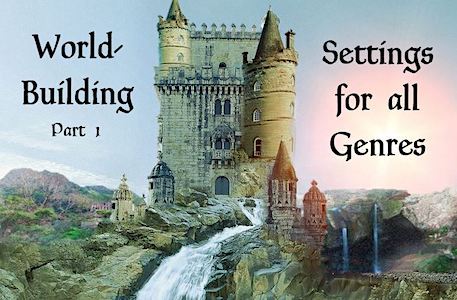Reblogged from The Story Reading Ape:

As a fantasy/science-fiction writer, I’ve stacked up a bit of experience with world-building that I’ve wanted to share, and The Story-Reading Ape’s blog is the perfect venue.
Now don’t run away if you don’t write speculative fiction. Clearly, world-building is a key part of bringing fantasy and science-fiction stories to life, but it plays a role in all fiction, and in some non-fiction as well.
Setting as Character
Most of us probably agree that the physical places within our stories need to feel authentic. But if we create them as mere backdrops to the action, we’re missing an opportunity to enrich our readers’ experiences. In great fiction, setting plays a role in the story. It’s changeable, a help, a hindrance, a metaphor, a mood, possibly even a character in the drama.
Fantasy author Brandon Sanderson is a proponent of the idea of setting-as-character and builds a “character profile” of the world he’s designing. From his character’s point of view, the world has “personality” including strengths, flaws, and quirks.
Regardless of your genre, the world in which your characters live shapes their experiences. Selecting an effective setting is as vital as choosing the right players and plot. The world might be a friend or foe to your protagonists and villains alike as they navigate a dynamic environment.
The setting of a book may rejuvenate or deplete, trigger buried flaws or instill hope. It may force the characters to learn new skills or gather greater knowledge, or it may confront old fears and force choices that break the heart and soul. It may assist your hero in evading a villain or trap him with no way out. The impact of a world may be physical, emotional, psychological, or spiritual.
In choosing a setting, consider how your plot may play out as you increase the challenges the world imposes. How does the conflict unfold in a sweltering city or on a damaged ship at sea, stranded in a mountain snowstorm or stuck living with controlling parents, in high society or in the trenches of war? What if time/fuel/medication/food/oxygen is running out?
If a scene is falling flat, intensify your setting to up the ante.
But that’s not the only way to bring a setting to life nor the most important.
Setting is Emotional
More important than the “facts” of the physical setting is the character’s emotional connection. A setting truly comes to life when it’s infused with meaning, when we as authors connect the character’s emotions to the details of the physical place and all they evoke.
Continue reading: World-building: Settings for all Genres – Guest Post by, Diana Peach… | Chris The Story Reading Ape’s Blog









































Many thanks for reblogging, Sue ❤️
LikeLiked by 1 person
My pleasure, Chris xx
LikeLiked by 1 person
Reblogged this on The Militant Negro™.
LikeLiked by 2 people
Thank you.
LikeLiked by 1 person
🎉🎵🤗🌷😉🌻
LikeLiked by 1 person
🙂
LikeLike
Thanks for sharing! I appreciate it and you. 🙂
LikeLike
Thanks for the reblog, Sue. It was fun guest posting on the Ape’s blog and lovely to show up here too. Have a great week. 🙂
LikeLike
My pleasure, Diana. 🙂
LikeLiked by 1 person
Reblogged this on Die Erste Eslarner Zeitung – Aus und über Eslarn, sowie die bayerisch-tschechische Region!.
LikeLiked by 1 person
Thank you Michael 🙂
LikeLike
Thanks for the reblog. 🙂 Much appreciated.
LikeLiked by 2 people